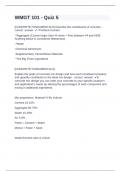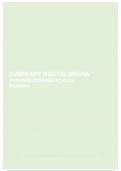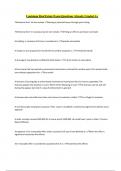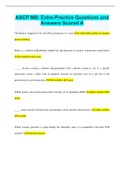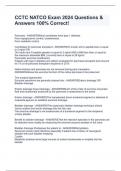Exam (elaborations)
WMGT 101 Question and answers already passed 2024/2025
- Course
- Institution
WMGT 101 Question and answers already passed 2024/2025 WMGT 101 - Quiz 5 [CONCRETE FUNDAMENTALS] Describe the constituents of concrete - correct answer -*Portland Cement -*Aggregate (Coarse larger than #4 sieve + Fine between #4 and #200. Anything below is considered deleterious) -*Water ...
[Show more]
